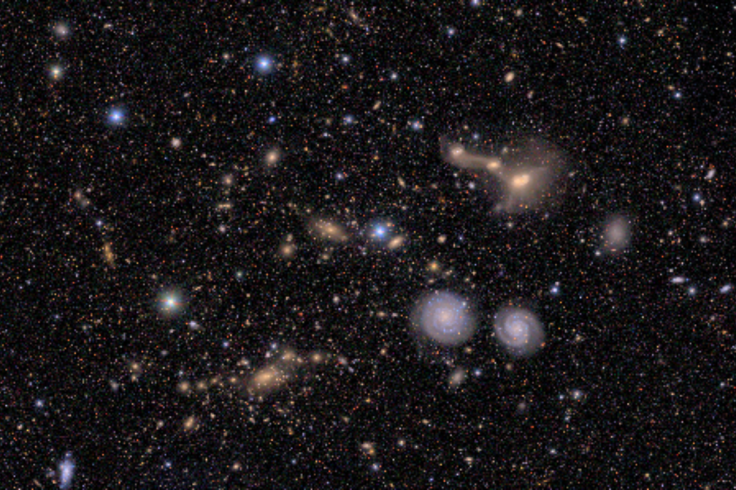World's Largest Space Camera Captures Millions of Galaxies in Stunning Detail – and It's Only Just Begun
Rubin Observatory begins decade-long quest to map the universe.

A new era in space exploration has officially begun. On 23 June 2025, the Vera C. Rubin Observatory in Chile unveiled its first breathtaking images of the cosmos, captured using the world's largest digital camera. The release marks the start of an ambitious 10-year survey to map the universe in unprecedented detail — and possibly rewrite what we know about it.
The observatory's Legacy Survey of Space and Time (LSST) Camera, a 3.2-gigapixel technological marvel weighing over 3,000kg, is now live. With its eye trained on the southern skies, the camera is set to track billions of stars, galaxies and cosmic events — many of them never seen before.
What Is the Rubin Observatory?
The Vera C. Rubin Observatory is a joint project of the US Department of Energy and the National Science Foundation. It is named after pioneering astronomer Vera Rubin, whose work was crucial in proving the existence of dark matter. The facility is tasked with exploring the biggest cosmic mysteries — from the structure of the Milky Way to the nature of dark energy and the accelerating expansion of the universe.
At the heart of the observatory is the LSST Camera, built to photograph the entire visible sky in the southern hemisphere every few nights. Over the next decade, this will create a time-lapse movie of the universe, capturing everything from exploding stars to shifting galaxies and passing asteroids.
When Did the Camera Start Operating?
The first images were released on 23 June 2025, confirming the LSST Camera's operational readiness. The initial photos featured the Large Magellanic Cloud — a nearby galaxy — and the dense, star-filled centre of the Milky Way.
Astronomers were stunned by the clarity and scope of the images, each one containing more data than 1,000 high-definition televisions. Full science operations are set to begin in early 2026, once calibration and software testing are complete. But even these early views promise a scientific revolution.
Where Is It Located?
The observatory sits atop Cerro Pachón, a remote mountain in Chile's Andes. Its location offers some of the darkest skies and most stable atmospheric conditions on Earth — crucial for deep-space observation.
From this altitude, the LSST Camera can scan parts of the universe that were previously unreachable by traditional ground-based telescopes. It also avoids most light pollution, enabling a clearer look at faint, distant celestial bodies.
Who Built the Camera?
The LSST Camera was developed by SLAC National Accelerator Laboratory in California, with global contributions from several institutions. Its data will be freely accessible to scientists worldwide, making this one of the most inclusive large-scale astronomy projects to date.
Thousands of researchers will work with the telescope's data, creating one of the most extensive and collaborative efforts in astronomical history.
What Will It Do?
The Rubin Observatory will investigate some of the most profound questions in science — including the nature of dark matter and dark energy, the life cycle of galaxies, and the fate of the universe.
It will also play a vital role in planetary defence by identifying near-Earth asteroids and tracking their paths. Its ability to observe fast-changing phenomena such as gamma-ray bursts and supernovae will allow researchers to witness cosmic events in near real-time.
How Will It Change Our Understanding?
The observatory's mission is to make the invisible, visible. Over the next ten years, the LSST will generate more than 20 terabytes of data each night, creating the most dynamic, detailed map of the universe ever produced.
This is not just about stunning imagery — it's about answering age-old questions: Where do we come from? What is the universe made of? And are we truly alone?
The Rubin Observatory's camera is now open for the cosmos to speak — and the world is listening.
© Copyright IBTimes 2025. All rights reserved.





















